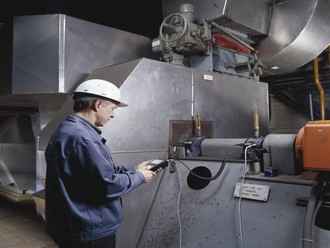Introduction
Field balancing provides the capability of balancing rotating equipment without disassembling the machine to take the out of balance part to a shop for repair. Dynamic balancing becomes necessary for a wide range of commercial and industrial equipment for the obvious reason that virtually all rotors eventually become unbalanced from a variety of conditions. Dirt deposits, minor damages and wear cause new imbalances during the ongoing operation of machines and systems. For example, some operational causes of unbalance include rotor fouling from accumulated dirt or other deposits on the rotor, bowing of rotors due to uneven heating or shaft damage, loss of rotor material from friction, and other causes. Rotor unbalance is the uneven distribution of mass around an axis of rotation. A rotating mass, or rotor, is said to be out of balance when its center of mass (inertia axis) is out of alignment with the center of rotation (geometric axis). Unbalance forces the rotating axis to orbit off-center.
The causes of Imbalance are:
• Eccentric components
• Incorrect Assembly
• Voids in castings
• Wear & corrosion
• Thermal distortion
• Foreign matter deposition
• Structural damage
• Loose parts
By using Field Balancing techniques such as Graphic Vector Method, balancing with a Strobe and Influence Coefficient Method, we can reduce operating costs
• By energy savings from reduced power consumption,
• By prolonging life of bearings and other components,
• By maintenance savings in spare parts and labour,
• By increasing product quality and by decreasing downtime





 Novotest - NDT
Novotest - NDT
 HKDQTECH - Thermal Imagers
HKDQTECH - Thermal Imagers
 UE Systems - Tools
UE Systems - Tools

